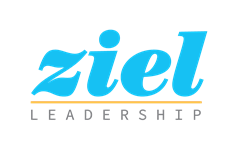The Intersection of Hope & Corporate Strategies
I run. I’m not sure it shows. (I really like food and beer.) But yes, I run. (I’m about a lot more corporate strategies, you know.)
I really enjoy running 4 miles loops around the lakes near my home. Not that I really notice the lakes while I run. I notice the sidewalk.
See the impact hope can have on your organization. Get in touch.
When I run, I stare at a point 30 feet ahead on the sidewalk. When I first realized this, I thought that maybe my eyes hover around the sidewalk, looking out for cracks, bumps and branches.
I’m 47 and an injury from a crack, bump or branch along my way is a risk, but that’s not why I do it this way. When I look too far out in the distance, I get this nagging anxiety about how much farther I must go (so many miles!). I didn’t feel less safe when I set my eyes on the horizon, I felt more overwhelmed by the distance I had remaining.
While yes, that might reveal the nature of my relationship with running, that isn’t the point here.
I really do need incremental goals.
It isn’t four miles — it’s 30 feet. And the truth is that 4 miles isn’t the ultimate goal. The ultimate goal is to be able to live much longer and still be able to eat plenty of food and drink beer.
The Meaning of Hope
Allowing my mind to drift around the thought of 30 feet at a time, I started reflecting on hope.
Stay with me here. Hope is a combo pack of goals, agency and pathways.
- Goals: the things we want to realize in our lives
- Agency: A belief we can achieve our goals
- Pathways: Having multiple routes to get to our goal.
Somewhere in his writing on the topic C. R. Snyder describes hope as waypower and willpower. When we have a goal and can identify pathways towards that goal – that is waypower. When we have the agency to put one foot in front of the other, even when it hurts, even when we want to stop, that is willpower.
Think about when you have a goal, but barriers get in your way. You find a new path (waypower) and muster the strength keep moving (willpower) towards your goal, that is all powered by the kind of hope he described.
In my work with individuals, teams and corporate strategies, I think a lot about hope. I help people clarify work goals, identify paths and reasons why it’s worth every small step. The more hope we have, the more likely we are to will our dreams into life.
Corporate Strategies Require Hope
Another author posited, “Hope is not a strategy.” Which is catchy, I admit. And he is right. I looked the meaning of the words up in the dictionary. Hope and strategy are two different things. But they are very much so connected. If you have no hope, you have no strategy. Instead, you have hopelessness, which is paralyzing.
So, what does this have to do with your business. Well, how do you connect people to the corporate strategies they’re expected to execute? It’s important to consider the role of hope. Do people see what the goals are and why they should contribute? Do they see the pathways by which they can achieve the goals? Do they have agency to make decisions so they can activate towards the goals?
Put in simpler terms: Do they know if they run 30 feet at a time, they’ll run 4 miles and be able to drink beer and eat tons of food for the next 30 years?
I am not a marathon runner. I run a couple of times a week, for 4 miles, 30 feet at a time. I figure that if I make a few good decisions now, I can keep making bad decisions later (see food and beer above). It’s a strategy – really.
